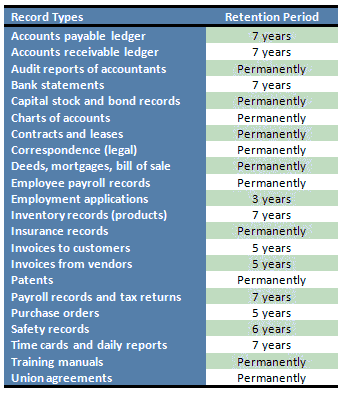Long Term Data Retention
Order Backup Policy Backup Policy Download Selected Pages
Long Term Data Retention - In addition to compliance, long-term data retention is needed for many other purposes. For example, information is needed to spot trends, support litigation or other business functions as well as normal functions including research & development, manufacturing and service support, sales and marketing - including customer relationship management (CRM) - along with human resource and accounting or financial activities. Magnetic tape (tape) continues to be relevant as a cost effective, business sustainable and energy efficient proven technology for long-term reliable data retention needs (see also Record Backup and Retention Policy).
Managing backup and recovery in today's environment is a multi-dimensional challenge with both near and long-term business requirements. Recent technological developments in disk backup have had a positive impact on short-term data retention requirements. But these improvements do not replace the need to execute and deliver on a long-term data retention strategy.
Policy needs to address the issues:
- Business and regulatory requirements demand a long-term solution
- How to manage and control the total cost of ownership (TCO)
- Ensures that the data is encrypted to meet security mandates for long-term Retention
- How to protect data while controlling the cost of power and minimizing the impact on the environment
- Have processes in place so that the data is intact and usable after years of storage
Record retention periods that are mandated include those listed below and need to be considered in this debate (see also Record Management Policy)

Order Backup Policy Backup Policy Download Selected Pages
Media and Software for Long Term Data Retention
When deciding on long-term storage the issue of the media, be it electronic or paper is important. Also, in the case of electronic storage, the question of not only the media but also the software and hardware to access the data is important. Technology continues to evolve.
For example, a number of years ago floppy disks were used. It was not at all an uncommon practice to include the "floppy" in the physical paper file with other materials. If you need to access that information today, how do you do that since most enterprises no longer have any computers that can be used to access the data. Add to the the version of software that is need to read the media. What if the file is in Word Perfect and your enterprise no longer has that software and hardware that is not supported on the existing computer that you have.
Now add to that the length of time the data has been stored and if there is any type of error on the medium or decay of the "electronic" data and are you really storing the data.







